Tiwi Island Art Ochre Colour Palettes
Colour Palettes from the Tiwi Islands
Ochre paintings from the Tiwi people are reflections of their ceremonial life. The patterns that artists use in their paintings come directly out of two major ceremonies that are part of Tiwi culture. One is the Pukamani ceremony, which is the funeral rights ceremony. We're familiar with those from the impressive tutini or Pukumani poles that are decorated with totemic patterns of clan and country. The other ceremony is the Kulama ceremony and that ceremony is about life and living and is performed each year after the wet season.
These two ceremonies inform the whole cultural background of Tiwi people. They also give an identity in the ceremonial and a clan sense and in an artistic sense.
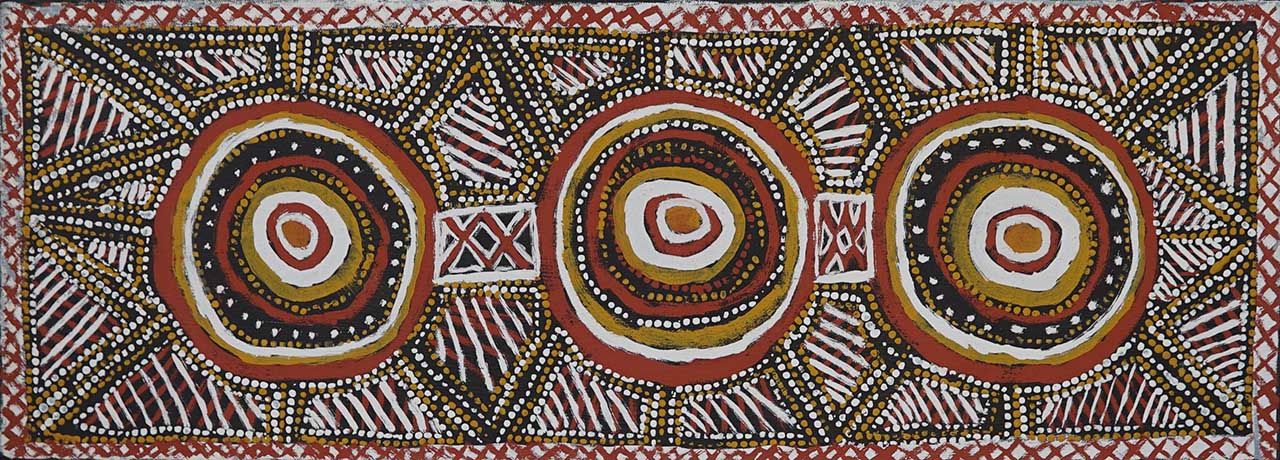
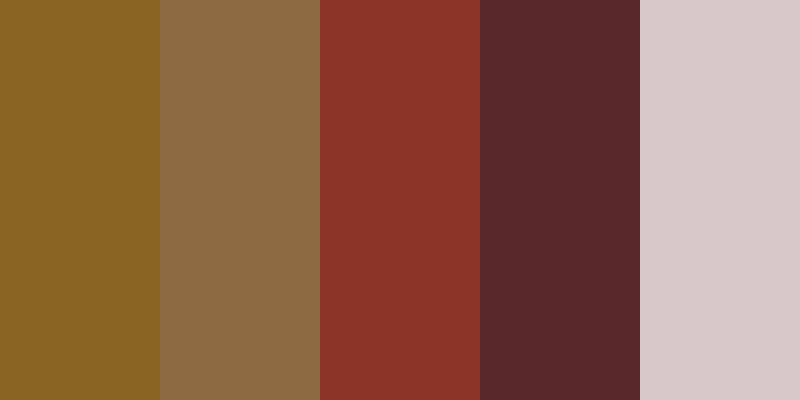
Pwoja Jilamara | Pwoja Jilamara
We look at a painting by Regina Burak and we see design forms which are familiar from armlet designs and decorative ornaments that go with traditional ceremonies. These are highly recognisable Tiwi designs, marked out mostly in black and white ochre, with strong highlights of red ochre and some yellow. The bold circular design is part of those decorations that mark out a performer or a participant in a ceremonial dance.
(Jap 014534)
View Pwoja Jilamara
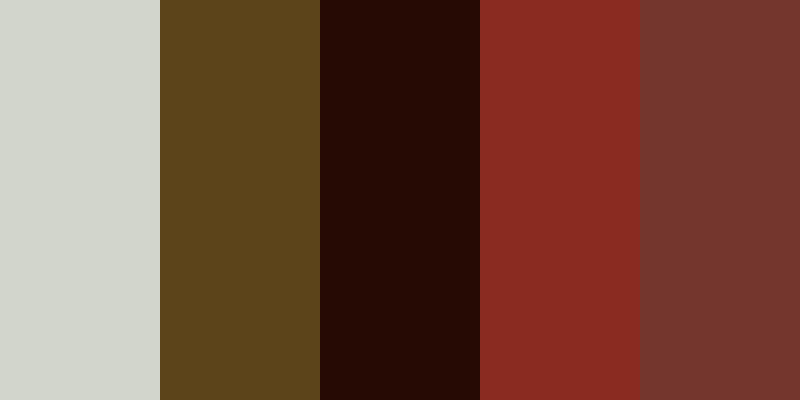
Susan Wanji Wanji | Kulama Design
Susan Wanji Wanji has painted an electric looking design related to the Kulama, or the Tiwi life celebration ceremony. The highlight of the whole painting is the white structural design. The zigzag patterns are emanating from the large concentric centre, formed like a huge oval shape that encompasses some more concentric circles at the centre of the painting. The white designs on a black background form the dominant feature of the design. Within that we can see all the parallel rows of dotting that comes from body painting, ceremonial body design. The dots are placed in rows of red and white, and yellow and white. So again the basic colours are of the earth, the ochres that are found on the Tiwi Islands. But by aligning them in these triangular shapes and running the rows of dots in different directions, the artist captures that sense of energy and decorative patterning that is so important in the ceremony.
(Jap 14536)
View Susan Wanji Wanji
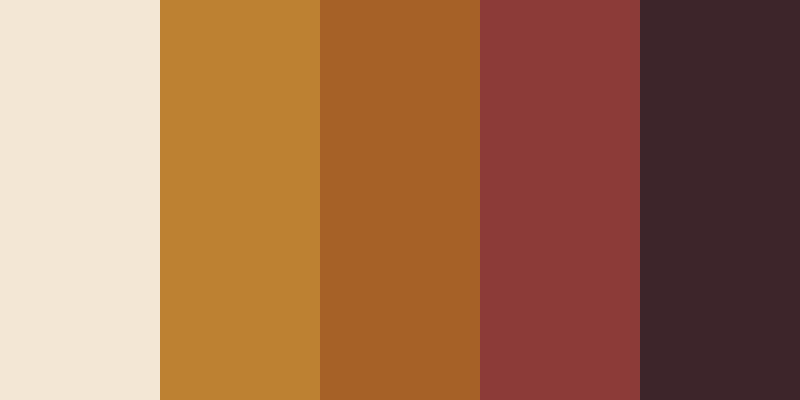
Susan Wanji Wanji | Jilamara Design
This is another Jilamara design from Susan Wanji Wanji. This time, a very structured series of diamond patterns lay in parallel rows divided by areas that are marked in black and white. The entire design is constructed out of white zigzag patterns that cross each other to form these diamond shapes. Within those the dotting alternating colours of yellow, ochre, and white against a deeper orangey ochre and red. The whole design is that tension between the white zigzag structural pattern and the layout of the rows of dots within the designs and in the background. The whole thing plays off each other as the shapes and colours compete for your attention. They setup these larger alternating blocks of colour, predominately the very hot colours of the red and orange versus the cooler colours of the yellow and white set against black and white.
(Jap 14537)
View Susan Wanji Wanji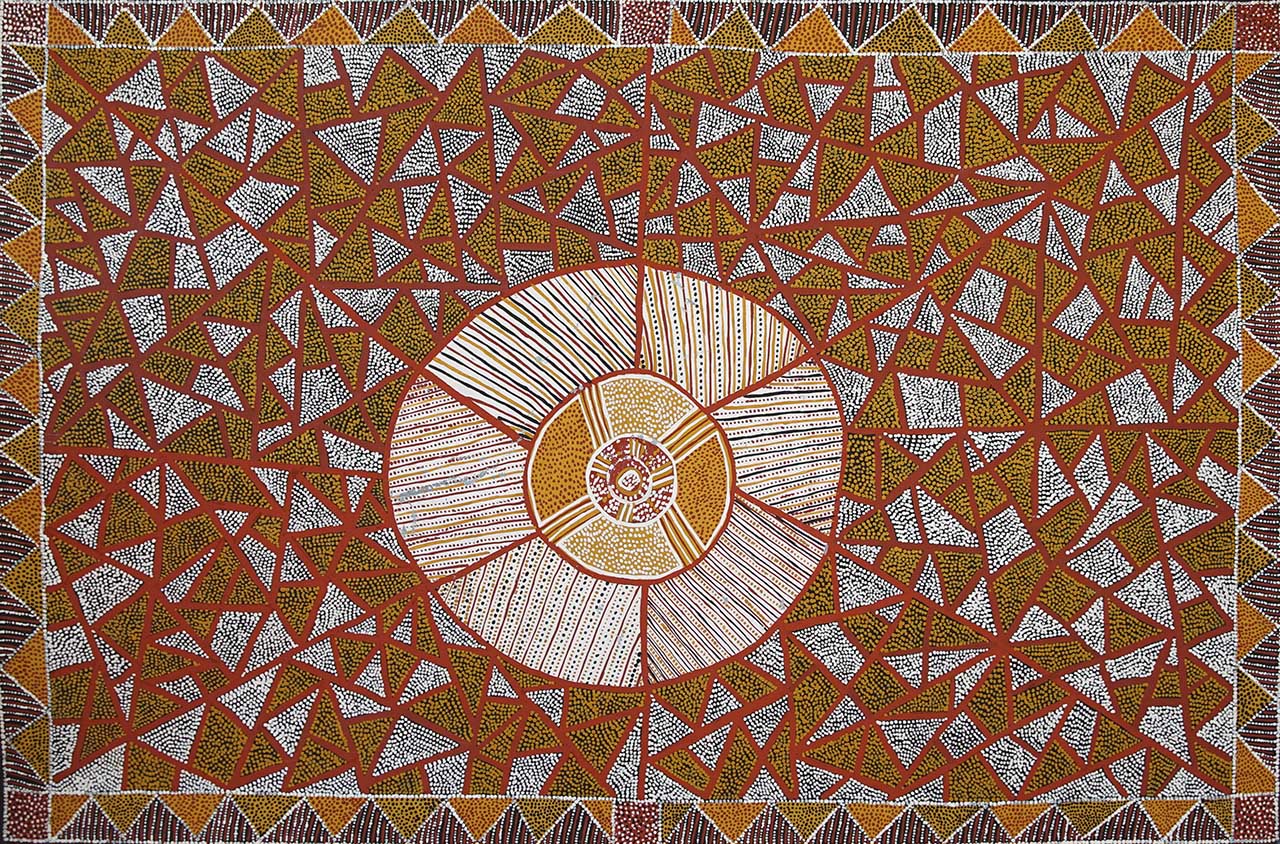
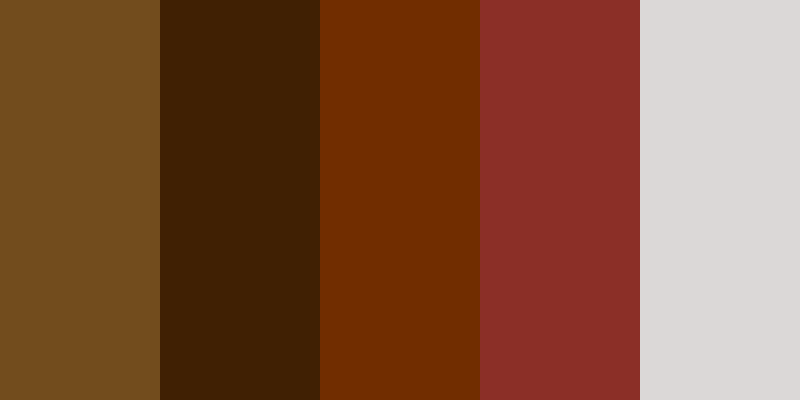
Susan Wanji Wanji | Pupuni Jilamara
In this image, Susan Wanji Wanji has created a Kulama or life ceremony design. At the heart of that is a large circle with lines radiating out into the outer areas, almost like a ceremonial ground. You can see the energy or the influence coming out of that central core marked in yellow and white, and going out into the area that’s filled entirely with diamond patterns and rectangle patterns. Within that outer area everything painted on black. The line structure is all in red ochre and the infill within all the diamonds is alternating white dots and yellow ochre dots. At the heart of the inner sanctum, the ceremonial ground, or maybe the core meaning of the whole painting, there are sets of circles within one another. The outer circle being predominately white, and then patterns or lines and alternating dot structures radiating out. They’re created in black and yellow oxide. In the inner hub, the centre is predominately red oxide. The intermediary area is a combination of red oxide, yellow oxide and white ochre.
(Jap 14539)
View Susan Wanji Wanji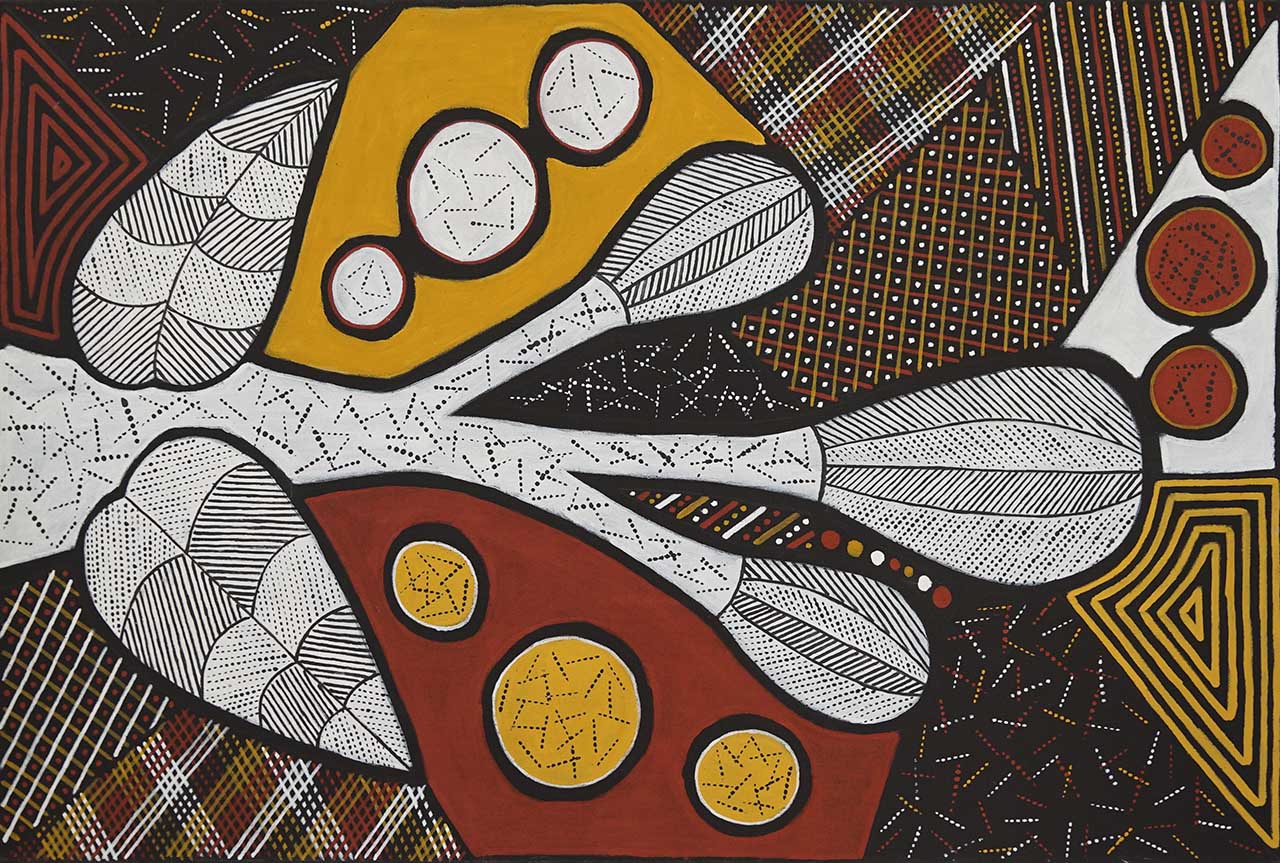
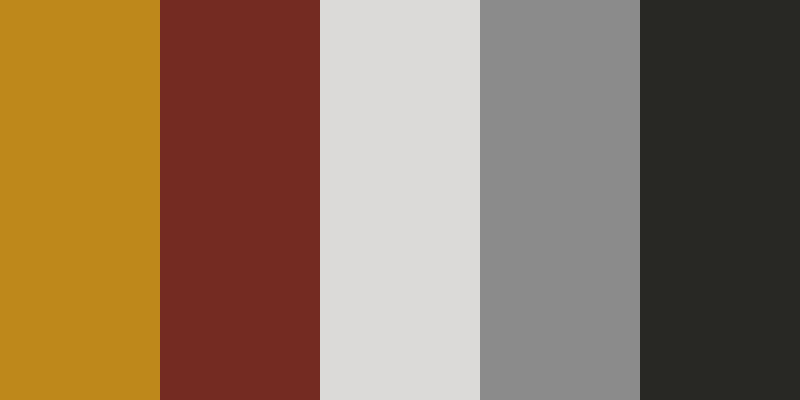
Reppie Anne Papajua | Papajua Wild Apple
This painting by Reppie Anne Papajua of Wild Apple is more organic in its shape than the other paintings from her community on Tiwi Islands. Wild apple is also reflecting the natural vegetation, one of the bush foods found on the fairly verdant Tiwi Islands, on Melville Island. Reppie has simplified the design of the tree to the black and white design with the fruit laid out along the sides. She has marked out examples of leaves and the solid trunk of the tree entirely in black and white. There are two sections, one with red oxide and one with yellow oxide with presumably the fruits marked on it. Interestingly in the background there are multiple clan designs, as different types of Tiwi patterning are associated with different communities. Some of these are done with the crosshatching designs and others are done with parallel rows of dots alternating with lines. You also notice other blocks made of cross-section lines infilled with dots.
(Jap 14541)
View Reppie Anne Papajua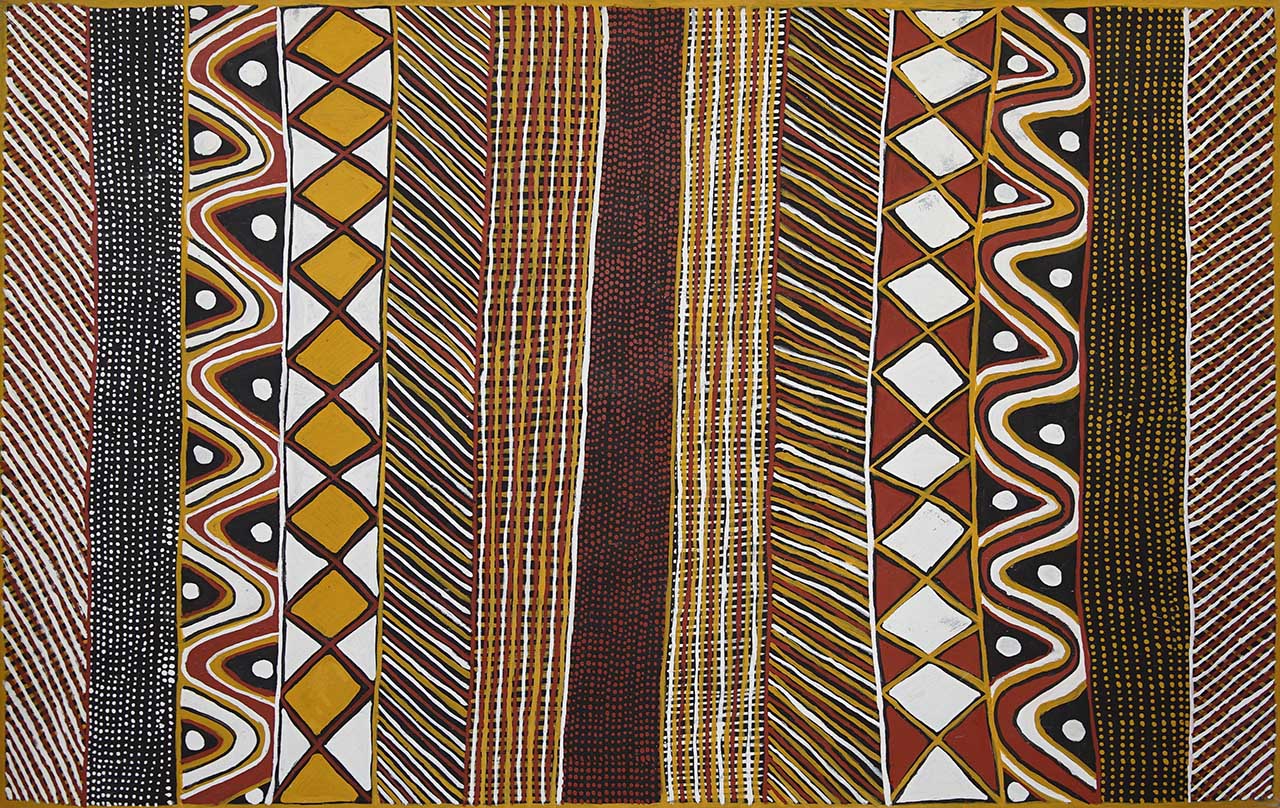
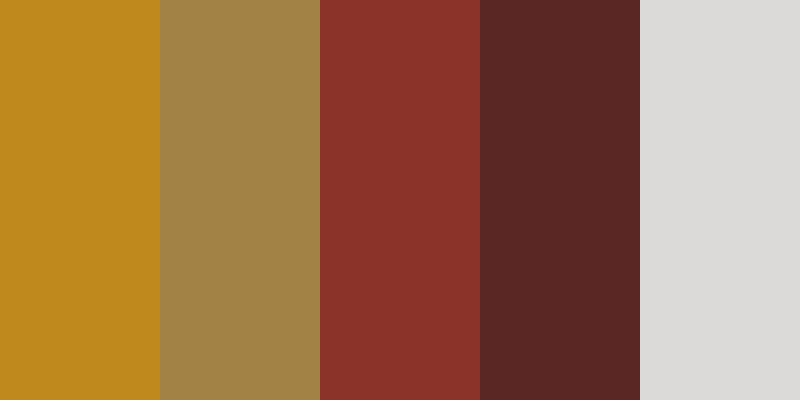
Josette Papajua | Jilamara Design
The painting ‘Jilamara Design’ by Josette Papajua is a classic structured design with an intensity of patterning that comes from ceremonial designs placed in parallel bands. The whole painting made up of thirteen sections, long panels that feature the decorative patterns used in ceremony. Within these the artist contrasts the blocks of colour, so diamond patterns that are often associated with fire and earth near other sections which are made up entirely of dots. Emanating from the centre there is one strip made up of red oxide dots on a black background. On either side of that are two different types of crosshatching, with lines running across and down, and they have different densities of spacing. One has a predominately yellow feel to it, and the other is more red ochre.
The next panel working out from the centre is entirely diagonal lines. There are a mix of colours that creates a different energy in each section. Then there are two sections of diamond patterns. On the left there is yellow oxide and white and on the right there is red oxide and white. On either side of those are designs made up of wave shapes. There is a rippling line that comes all the way down the panel, broken up with larger dots underneath the wave. Moving towards the edges are a black panel with dots and then the final diagonal design.
The whole energy of this painting is made by breaking up the colours into the different patterns that are familiar from ceremonial use. By putting small sections of these in parallel layout across the painting, the artist has created a beautiful visual effect suggesting the experience of Tiwi ceremonial life.
(Jap 14543)
View Josette Papajua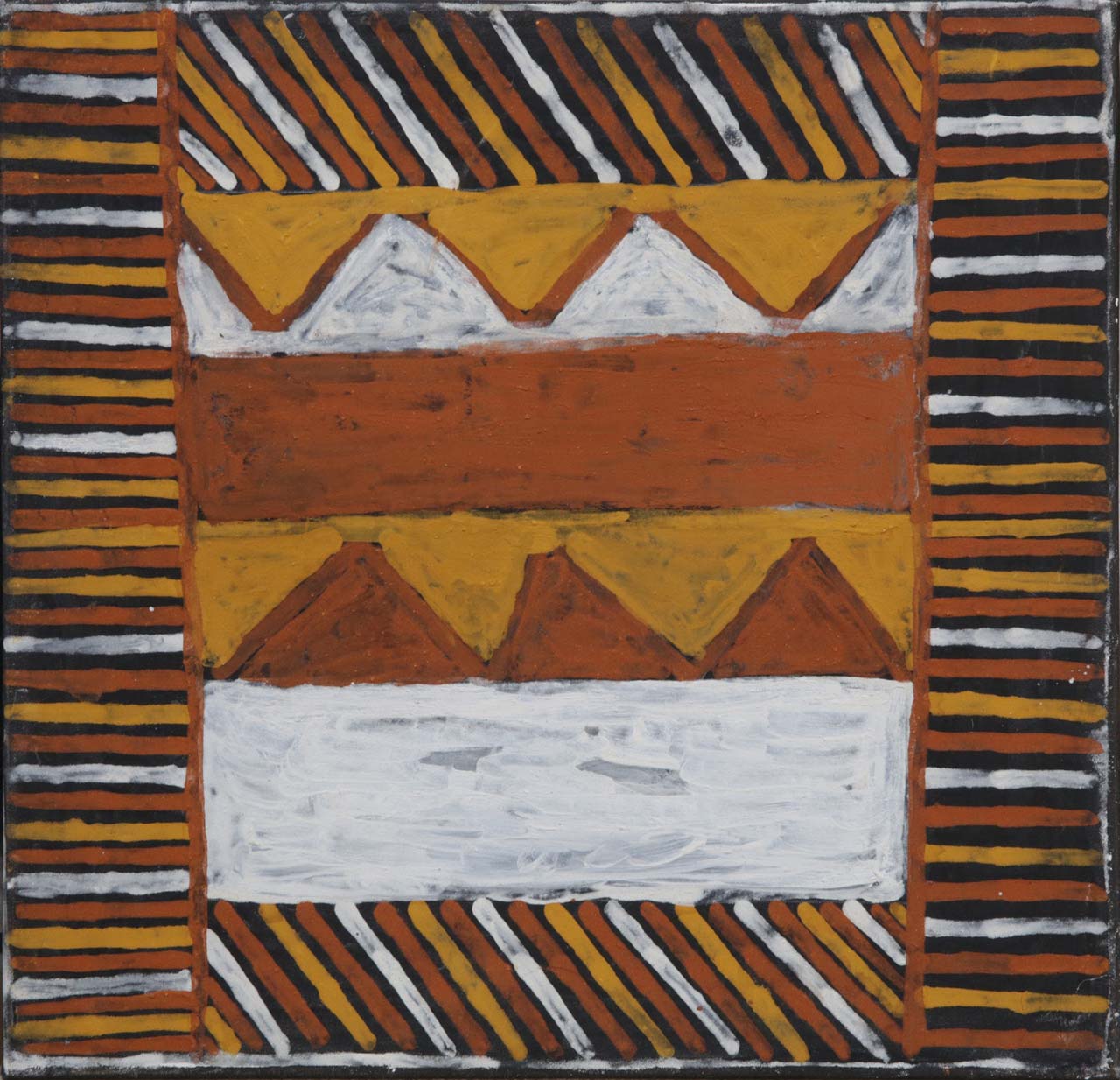
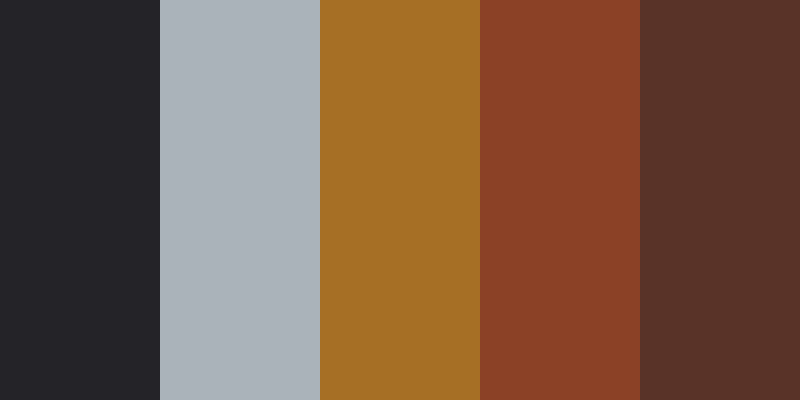
Ian Cook Jilamara | Body Paint Design
Ian Cook has distilled in this small painting a Jilamara Body Paint design. At the heart of the painting are solid blocks of colour made from red oxide, yellow oxide and white. The bands of colour and the diamond pattern form the central structure. Then the outer areas of the painting comprise horizontal and diagonal lines marked up in alternating colours of yellow oxide, red oxide and white. All of the design sections are painted on a black background. This is a very simple composition relying on the contrast of solid blocks of colour and parallel line designs, all reflecting body paint design from ceremonies.
(Jap 009676)
View Ian Cook Jilamara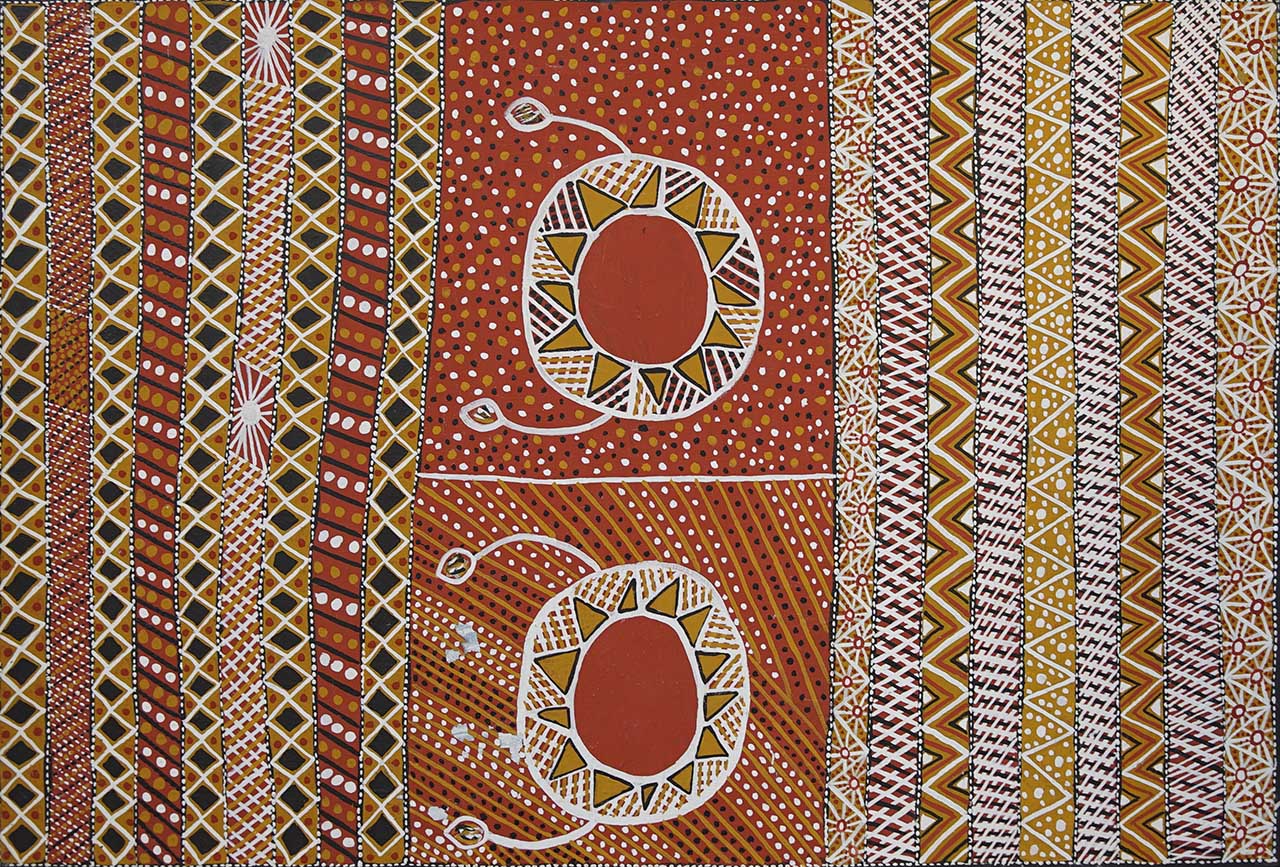
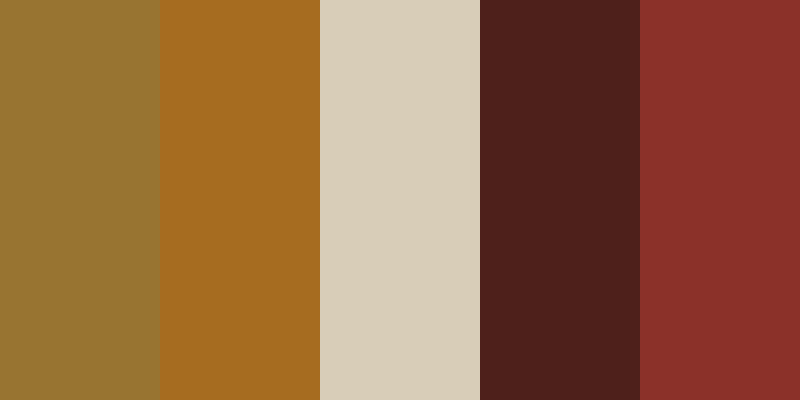
Shirley Puruntatameri | Pupuni Jilamara
This painting by Shirley Puruntatameri titled ‘Pupuni Jilmara’ has at its centre two armlet designs or body adornments worn during ceremony. The two armlets are marked out as large circles predominately in white – woven fibre armlets. They are decorated with yellow ochre triangles set against a red background that has different patterning with different significance. One is made of dots and the other one made of rows in yellow oxide marked out with black and white dots. Moving out from that central circular designs that dominate the painting, the artist has marked out parallel bands of patterning. These feature contrasting oxide colours, using zigzag and diamond patterns marked up in yellow oxide and white. Other areas are broken up using black and white crosshatching to create an intensity of pattern. The black and white lines mark out the sections and there is the use of dots to break it up. All reflect the very important ceremonial world that is at the heart of Tiwi culture.
(Jap 14533)
View Shirley Puruntatameri
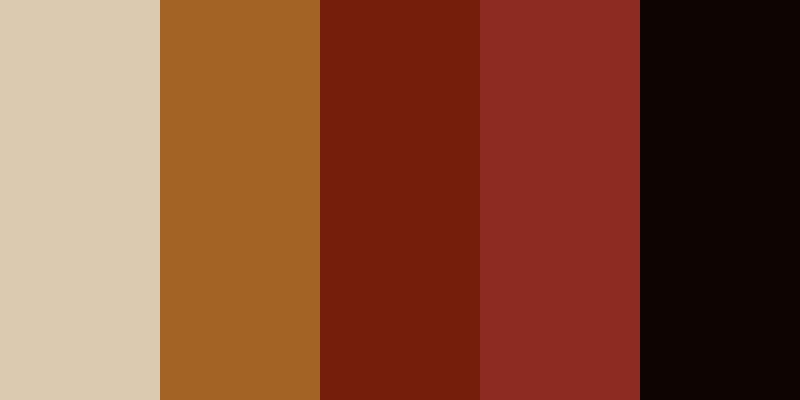
Alison Puruntatameri | Jilamara Design
Alison Puruntatameri has created a painting entirely made of contrasting strips of pattern. Within each of those sections, the background colours are painted in solid stripes, which is different to many of the other paintings where a black background is used to offset different densities of dots and lines to make the pattern. In this painting the artist has created alternating backgrounds in red oxide, yellow oxide, and white. And then within those the artist has gone back and dotted the entire sections of panels with just a single colour. On the red oxide, the artist has used white for the dots. On the yellow oxide it is red oxide for the dots. And on the white background she has used a colour that is a pale yellowy- green. And the designs have been broken up with the black lines that separate each of those solid block colours. And again, it becomes an intense pattern that reflects a ceremonial design.
(Jap 14527)
View Alison Puruntatameri